How to prune raspberries in the fall?
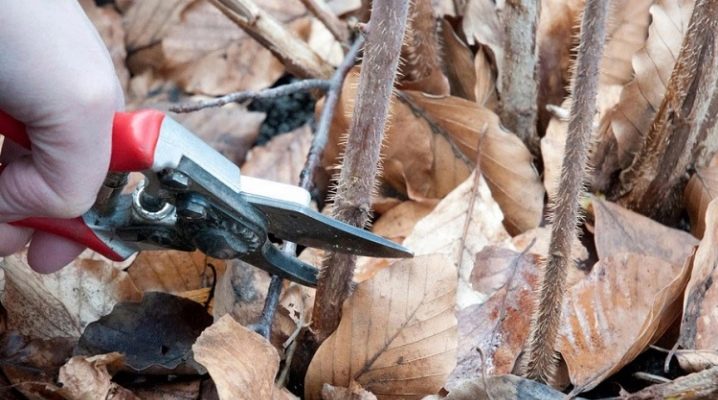
Like any garden, orchard culture, which bears fruit a lot, over the course of decades, raspberries need regular pruning. Neglect of raspberry pruning is fraught with a gradual, but sure decrease in yield, many bushes die, not having time to give new shoots and roots.
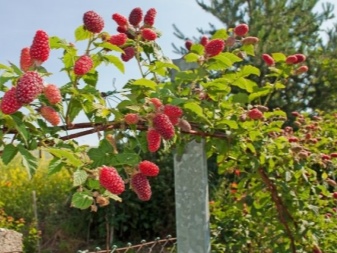

The need for a procedure
Raspberry pruning is essentially bush rejuvenation. This is the fight not only against pests hiding in the "jungle" formed by shapeless and ownerless rows, which have not been looked after for many years, but also the stimulation of the growth of new, fruiting branches that directly affect the harvest. The fact is that on old branches, which are from several years old or more, inflorescences are not formed - such branches turn only into a bearing "skeleton".
Bushes, on which young branches have ceased to appear, in fact, become a "barren flower" that does not carry any practical (harvest) benefit, except for possible landscaping. Raspberries reproduce not only by seed (seedlings), but also vegetatively (a cut off branch of the bush - along with a young root).
Reproduction alone (planting of daughter shoots) is not enough - the “plant and forget” approach does not apply here, the raspberry tree needs care.
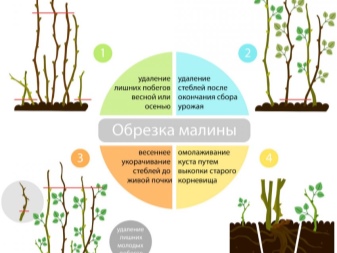
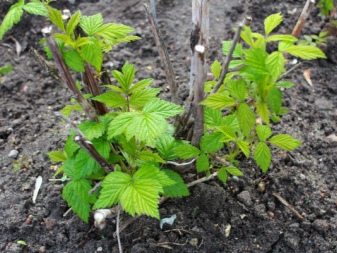
Timing
The main pruning is best done in the fall, when the raspberry thickets have stopped bearing fruit this year, and then shed their foliage. It is at this time for the next year that the shape of the growing bush is set.
Extra pruning is only associated with the removal of diseased, old and not properly developed branches. Ignoring this procedure for the next year will negatively affect the quantity and quality of the crop. Dried (dead branches) will prevent young ones from growing.
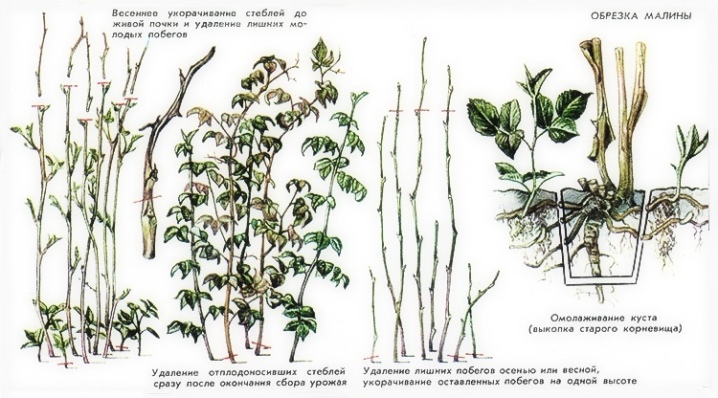
Lunar calendar
Unlike the usual "weather" calendar, the lunar calendar is focused on specific numbers. Here astrology and numerology come to the rescue, this approach is much less justified than actions “according to the weather”. The essence of the method is pruning during the waning moon. There is a theory according to which the sap flow is directed towards the roots, which will prevent the loss of sap (evaporation) through the applied cuts of the branches. You cannot cut off raspberry bushes on the full moon and on the day the moon phase begins to grow and on the 23rd day.
Specific pruning dates in the fall are September 2, 5, 7, 9, 20 and 28, October 1, 4, 5, 10, 29, 31, November 3, 7, 8, 11, 28, 30. According to this theory, the 3, 6 and 8 lunar days are conducive to any activity in the garden and in the garden, including pruning the crown of shrubs. You cannot trim on October 1st and 28th, November 1st and 26th.
In this case, the moon should occupy a visible place on the map of the starry sky - in the space bounded by the constellations Aries, Leo and Sagittarius.
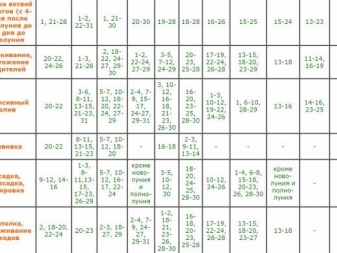

Taking into account the region
If you do not believe in astrological signs, then pruning with an eye to the climate and weather forecast in the region is carried out by you 1.5 months before the onset of regular frosts... This period is due to the time during which raspberries accumulate nutrients, thus preparing for winter. Each region has its own pruning time frame.
For the Urals and Trans-Urals, Siberia, this period takes the entire August. In the Primorsky Territory, in Moscow and the Moscow Region, in most of the middle zone of the European territory of Russia, this period can be postponed to mid-September, in the Leningrad Region - to its end. In southern Russia, pruning is performed from mid-September to mid-October.The minimum time for raspberry thickets to adapt to frost is only three weeks. If this deadline is missed, then such a deviation from the schedule can seriously reduce the harvest next year, since the raspberry bushes must be prepared in advance for the next growing season.
On regular raspberries, pruning can be done immediately after the end of the harvest season. If the weather forecasters promised a cold snap early, then it is worth slightly shifting the term for shortening the branches to an earlier one. It is not easy to take into account the exact timing of pruning - be guided by the planned frost. In remontant varieties, which differ in fruiting until autumn, giving a little crop almost all summer, unnecessary branches are cut off after the leaves are shed.
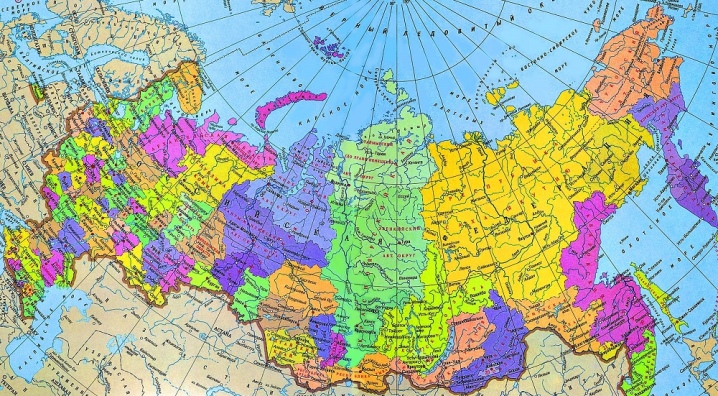
What tools are needed?
For small branches that have not had time to develop to medium sizes, ordinary, sharply honed office or sewing scissors made of high-quality tool steel would be suitable. For medium and thicker branches, a high quality pruner (made of the same steel) is indispensable: the cut should be even.
As consumables - wax, garden varnish or other environmentally friendly product that closes the cut site from moisture and prevents pathogens, molds and fungi from multiplying there. If new ones are installed, or existing trellis supports (mesh on a supporting frame) are being modified, then use natural or synthetic twine (garden twine). The garter of an overgrown raspberry tree will give owners the ability to easily harvest by walking between the rows, and will delimit the plants, giving them more sunlight and better ventilation.
The pruner and scissors should be sharpened as much as possible. A delimber can also be used for thick stems. An auxiliary tool is a rake that removes cut branches that are unsuitable for further propagation.
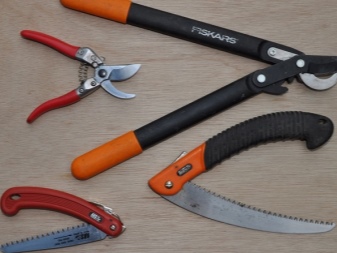
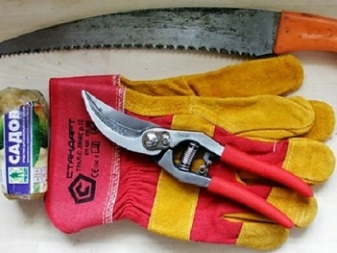
How high should you cut?
Formative pruning relies on preventing excessive thickening of raspberry bushes. Dense growth, an abundance of greenery will create a real "thicket" in which bees and other insects will not have all-round access for pollination of inflorescences. As a result, a small number of pollinated flowers is the same number of berries. The berries themselves, receiving little light, will ripen more slowly, will taste like grass, watery, without the distinct characteristic taste and aroma of ripe raspberries. So, in the first autumn, pruning is performed as follows.
- About 10 of the best, healthiest shoots in development are left on the bush. Everything that did not have time to grow properly automatically goes under the knife.
- In the second year, pruning of daughter shoots is carried out at the same 15 cm. The essence of the scheme is to stimulate the active growth of new shoots, especially those that directly bear fruit.
There is another scheme for pruning raspberries.
- Many lateral young branches are cut... The bottom line is that the main one has time to grow by a meter or more over the summer. For every 10 side branches, for example, 3-4 are left.
- Repetition of the same stage next year will allow the raspberry row to grow at the height of human growth and even more (with a total length of over 2 m). Most of the lateral shoots are cut off from the raspberry tree that continues to grow rapidly. The growing main stem is tied to a trellis - as it deviates from a direct position under its own weight and in the wind.
- In the third year, the top of the main stem is cut... From that moment on, the side branches continue to actively grow in different directions, which will enable the raspberry tree to wrap around the trellis net. Up to 5-6 years (by age), the bushes bear fruit well, the yield reaches its maximum amount. In this case, each secondary (tertiary, quaternary, and so on) branch is shortened by 25 centimeters from the crown.
An integral part of such a scheme is cutting off the lateral bush processes coming from the common (maternal) basal rosette. If it is not possible to plant them in new places, then sell them to any interested amateur gardener or throw them away. The weakened tops of the branches can be cut to the first well-developed bud. If too many branches have developed, and they are all healthy, you should not leave some - they will create a thickening, which has a beneficial effect on the pest colonies.
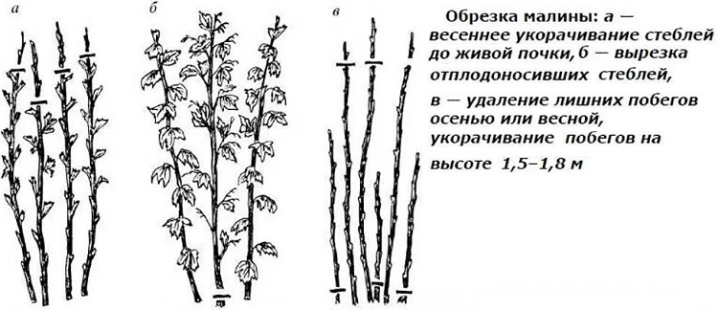
Methods
There are several methods to cut the extra branches out of the raspberry tree. By combining them, they achieve a beautiful appearance and high yield of this berry.
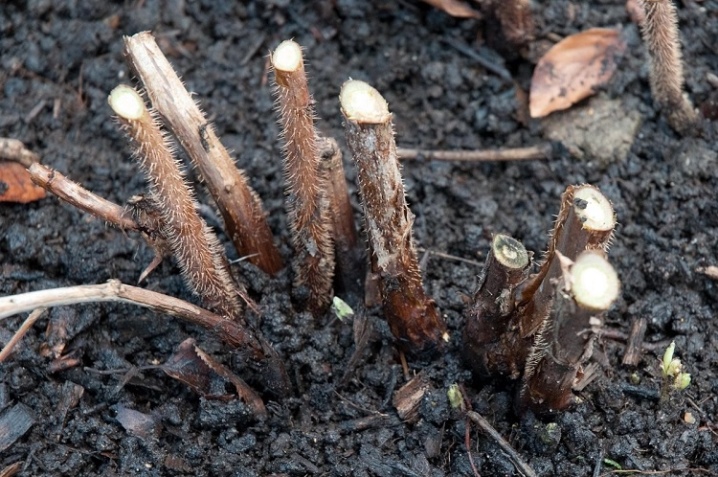
Regular
Simple pruning can affect both the aerial and root parts. In the first case, the thinning of the shrub is performed from the young growth, which will not have time to lignify by the fall. Green shoots, not lignified, die - there is no point in leaving them, knowing that they will not cope with the task at hand (turn into perennials), while taking away a significant part of the nutrients from the main bush, there is no.
And this "life reserve" would be spent on the growth of other, lignified shoots, lignification that appeared in the spring, ripening of the crop in July and August, strengthening the protective forces of the bush as a whole, including further growth of roots.
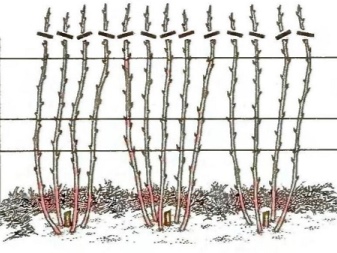
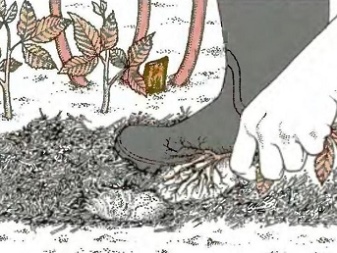
Formative
The "skeleton" of the bush also needs a clear formation.... Depending on the variety, the owner of the raspberry tree chooses which is more important - to allow the raspberries to rise, say, almost to the roof of a gazebo or other structure, a barrier that serves as a trellis, or to shorten the central shoots, having previously created a lush, but translucent and well-ventilated crown ...
For this purpose, everything that is underdeveloped, thickened, extraneous is removed - it is not the greenery that is thinned out, but the main part of the bush. In essence, the usual pruning can be postponed - replaced immediately with a formative one, however, in the summer, the trimmed places are immediately sealed with garden varnish or wax. The manifestation of pity for a seemingly healthy, seemingly actively growing undergrowth is unacceptable - these are not decorative bushes, which, by the way, are also leveled, but shrub "fruit".
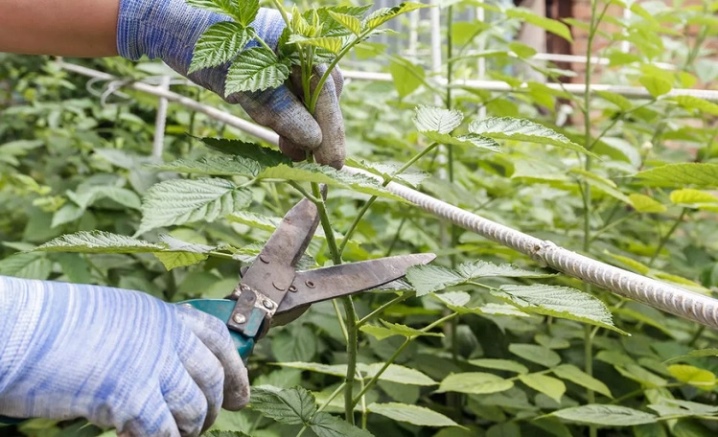
Sanitary
The sanitary condition of the bush is the absence of anything unhealthy. Whatever it is affected, it must be removed immediately so that the disease does not cover the entire bush. Dry, rotten, overgrown with moss, fungus, mold, affected by microbes - all such branches and shoots go “under the pruner”. The goal is to keep it viable.
In the wild, natural selection will destroy everything weak and sluggish, while humans are able to speed up this process, preserving what is good and useful - the branches and roots that give the maximum return. Sanitary pruning is never too late: it is seen more as an emergency.

How to prune remontant varieties?
In the autumn period, remontant varieties differ in service from simple ones. Before the onset of frost should not be more than a month - and less than three weeks. Do not strive to cut the bushes in the summer - the ripening of the berries is possible in the fall. To obtain a large harvest, ordinary pruning is performed on all bushes. As for the two small harvests, then, accordingly, the cutting of unnecessary branches is partially done. It is “half” pruning that suits the southernmost regions of Russia. The rest of the regions, where the climate is the most severe in terms of winter, practice widespread pruning of bushes.
Partial pruning is done as follows. Two-year-old branches that have lost the ability to bear fruit abundantly are pruned to the ground level - without leaving stumps. You can distinguish them by the crust that begins to fall off. Only up to 4 of the most viable branches are left - fruiting branches have not yet grown on them. In the case of full pruning, all shoots are removed along the surface line of the soil. The stumps should not be left here either - they would serve as a haven for bacteria, spores and fungi.
In both cases, all trimmed biomass is removed from the site. You should not be afraid of complete pruning: raspberry varieties with a long-term harvest yield berries on both two-year and one-year branches. If the branches that have become unnecessary are not removed during the fall, they are cut in the spring.
Newcomers to the cultivation of long-lasting raspberries are often encouraged to take advantage of the yellow varieties. The difference from ordinary raspberries in remontant is that fruiting shoots appear already within the first year.
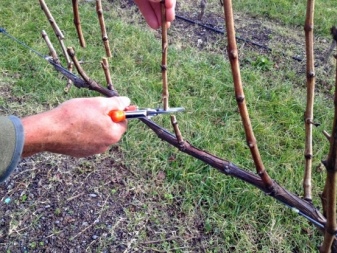
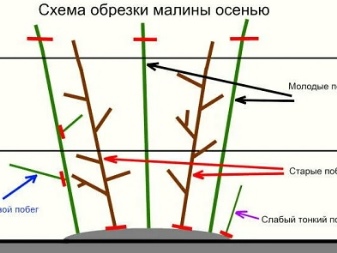
Follow-up care
To process raspberries after a haircut means to follow these steps:
- a thick section of the cut is covered with wax or garden varnish;
- spraying with substances that repel pests of all types and varieties;
- if necessary, feed the plants.
Raspberries, like any bush and garden varieties, are recommended to be grown in a place that is extremely protected from the germination of weed seeds brought by the wind. The ideal place is greenhouse conditions, in which the sunlight will be sufficiently diffused, partially absorbed, for example, by the polycarbonate matte roof of the building. Here the plants are also not affected by the hurricane and are partly protected from hail. It is recommended to irrigate raspberry thickets with a drip method - its effectiveness has been proven by the example of millions of gardening farmers.
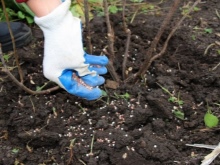
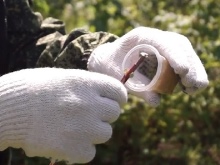
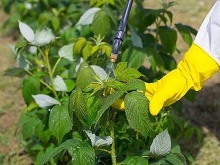
Common mistakes
Often, after harsh winters, fresh, transplanted parts of raspberry bushes awaken longer in spring than usual. Common raspberries are incredibly viable: like, for example, blackberries and a hybrid - ezhemalina, they are able to survive and multiply, releasing shoots towards the end of spring. Do not rush to dig it out: these bushes will still show themselves. The previous thesis seems convincing that raspberries, like a weed, will survive even in drought. This is not true. After a week of 40-degree heat and heat, she often dies.
It will be correct to water it every day in hot weather. Do not use fresh, three-year-old compost. Fresh waste from humans and farm animals, poultry, not “fermented” for a proper period, is guaranteed to burn out the root system of any garden and vegetable garden crop. Do not sprinkle raspberries during flowering. The water will wash off the pollen from it, many flowers will be unfertilized, and the harvest will become very scarce.
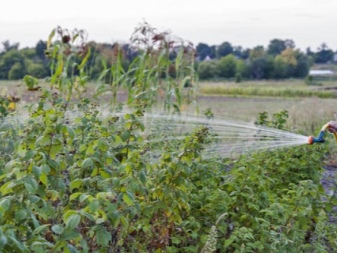
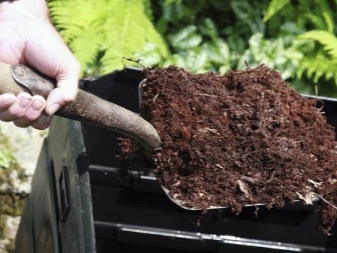
Do not use for irrigation water containing hydrogen sulfide, excess iron and other "chemistry" not shown for use. If, for example, a single application of a weak solution of copper and iron sulfate can scare off pests, and potash / phosphorus fertilizer, also applied once (in the spring), feeds, then all other compounds will only harm. Hydrogen sulfide combines with oxygen dissolved in water and turns into sulfurous acid, which, like any inorganic acidification, inhibits the growth and development of new branches, prevents the buds from bursting and new shoots from emerging from them, because the water becomes “dead”. Soluble iron oxide, oxidizing, settles in the form of rust on plants, soil, clogs irrigation pipelines and spray nozzles. Both rust and sulfur compounds change the composition of the soil: by reacting with some nutrients in it, they form sulfuric acid and ferruginous compounds, many of which are not useful for horticultural crops.
You can only trim the bushes with a sterile pruner. The easiest way is to either scald it or process it with Aseptolin.... This preparation contains up to 70% ethanol - even its 15% solution kills any cell.
Cutting with an un-sterilized tool means bringing pests invisible to the naked eye into the cut. Preparation for winter is done in early fall or mid-fall. Pruning raspberry bushes in winter is prohibited.
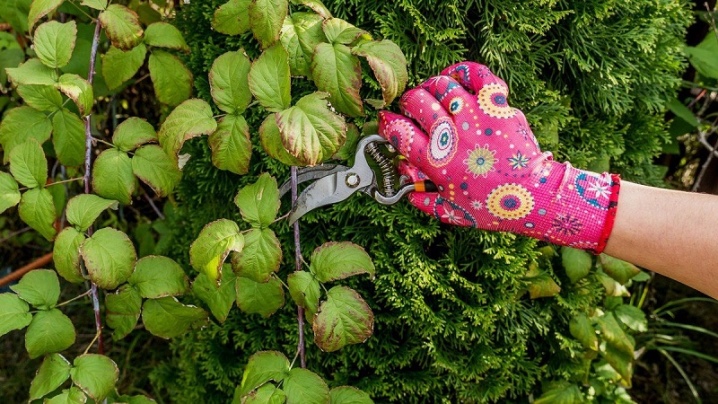









The comment was sent successfully.